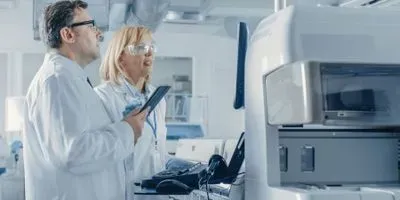Increasing demand for remote diagnostic and support services has been spurred largely by the ongoing global pandemic, which necessitates physical distancing and limits the number of people permitted within the laboratory environment at a given time. In addition to ensuring safety, this service model offers unique advantages that can continue to benefit labs upon the return to normal operations.
The traditional approach to analytical instrument service and maintenance necessitates a technician or engineer onsite to assess the problem and perform the necessary work. Downtime and delays may vary from a few hours to a few days, depending on several factors such as travel time to the laboratory. Once the technician or engineer arrives and assesses the problem, they may not have the necessary parts, which creates further delays as a subsequent visit is required to complete the work. When essential instruments are offline, lost productivity quickly translates to lost costs. For most routine maintenance, minor repairs, and troubleshooting, remote diagnostic and support services offer an efficient alternative.
“Downtime issues that can be resolved with a simple maintenance procedure, and that customers can perform with remote assistance, negates the need to have a support engineer onsite,” explains Jason DiFraia, associate vice president, services product management at Agilent Technologies. Using remote service tools, laboratory personnel can dramatically cut down on the time to achieve a resolution. According to DiFraia, new advances in “augmented reality” tools bring remote services to a level of effectiveness not possible with previous technologies. The service engineer and user are able to look at the same view of the equipment in real time, and the ability to mark up and annotate the shared image further increases efficiency in problem solving.
Related Article: Working with Remote Laboratory Teams
If the issue involves a maintenance procedure, it can be relatively easy to solve by the instrument user with assistance from a remote support engineer, eliminating the need for an onsite visit. For example, overdue consumables replacement, cleaning, or calibration can often be resolved in this way.
Remote diagnostic and support services are also invaluable for laboratories located in more remote locations that are less easily accessible, such as oil rigs and mining sites. Many of these instruments have smart functionality to alert laboratory staff of any issues. DiFraia explains that once an issue is identified, the resolution can be fast-tracked with remote services and support. In the event that a repair is too complex to be resolved remotely, these services can facilitate more efficient onsite visits. “If a service visit is required, remote service tools can be used to troubleshoot the problem more accurately, so that the engineer arrives with the right parts, and knowledge of exactly what procedures are needed beforehand,” explains DiFraia. The repair can usually be completed in a single visit.
Factors to consider when purchasing remote support services
When considering remote diagnostic and support services, there are a few things to keep in mind. First, some repairs should only be performed by a skilled service technician onsite. These include complicated repairs, work that may pose a safety risk to an untrained individual, or repairs that could potentially damage costly, sophisticated instruments. If the laboratory does not have internet connectivity, this can limit the ability of the service provider to connect remotely to instrumentation. Further, if wireless technologies are being used, as in the case with augmented reality remote servicing, laboratories should consider wireless bandwidth availability, as poor Wi-Fi or cellular service will limit the effectiveness of these tools. “Additionally, in some cases, the laboratory’s IT policies may limit the use of remote service due to security concerns,” says DiFraia. As such, it is worth checking IT guidelines to ensure the lab would not be in violation.
Lab Management Certificate
The Lab Management certificate is more than training—it’s a professional advantage.
Gain critical skills and IACET-approved CEUs that make a measurable difference.
Remote diagnostic and support services are valuable tools for laboratories adapting to current safety and physical distancing requirements. These tools are also being more widely adopted to enhance efficiency and productivity—two important benefits that will remain relevant in the future.












